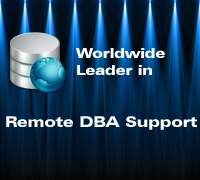Oracle Parallel Server and Oracle RAC Server Comparison
This article explains basic differences and comparison between Oracle Parallel database server and Oracle RAC database server. We are getting too many requests for publishing this article as soon as possible.
Every time we have confusion in our mind that what are the different between Oracle Parallel Server and Oracle RAC. Oracle Real Application Cluster was introduced in Oracle 9i version. Before Oracle RAC there was Oracle parallel server available. After Oracle 9i Real application Cluster, Oracle always deploys new features in newer version of Oracle including Oracle 11g. Means we can list of differences of all Oracle RAC versions. But we are unable to see differences of Oracle Parallel Server and Oracle RAC database. During remote dba services, we faced this issue because of lack of knowledge of differences of OPS and Oracle RAC.
Oracle Parallel Server called as OPS and was introduced in Oracle 7. After that all Oracle Database server has OPS with some new features (as it is). In Oracle parallel server, parallel cache management (PCM) locking system was working. PCM lock never locks rows but it hold lock instance. The way of PCM locking was either hash locking or fine grain locking. PCM hash locking was default and it doesn't release lock without another instance send request for same blocks. PCM locks were degrading performance of Oracle Parallel server. Because every time block is written to disk and after that only transferring to another instance.
Oracle Real Application Cluster was introduced in Oracle 9i server. New feature and concept was introduced called CACHE FUSION. Requested blocks transfer using private interconnect network from one buffer cache of Oracle instance to another buffer cache of Oracle instance. If block exists in cache then any of connected RAC instance can obtain from cache only without written to the disk. Instead of PCM locking mechanism, Oracle RAC uses Global Cache Services (GCS). GCS is more powerful than PCM. Oracle RAC also uses Global Enqueue Service GES for managing locking in RAC database. Performance of Oracle RAC database server is improving because of above great features.
Another performance problem was block pinging during synchronization of database in OPS. Scalability and performance both major issues of OPS. Most of performance problem resolved after cache fusion introduced in Oracle RAC.
An OPS was managed by using OPSCTL utility called Oracle Parallel Server Control with OPSM (Oracle Parallel Server Manager). In Oracle RAC, there is SRVCTL utility introduced and control with GSD (global Service Daemon).
Block Server Process (BSP) was responsible to transfer data blocks in cache in Oracle Parallel Server. In Oracle RAC this work is being performed by GSC (Global Service Cache) and GES (Global Enqueue Service).
Work of OPS Daemon of Oracle Parallel Server is now performed by GSD (Global Service Daemon) in Oracle RAC server.
A database administration point of view, Oracle RAC database administration is more easy than Oracle Parallel Server administration. There are lot of tools and new concepts introduced in Oracle RAC like Grid control, DataGuard etc.
Immediate failover detection and transfer client request to another node using VIP configuration was introduced in Oracle RAC, This feature didn't in OPS. OPS third party vendor owned cluster manager like HACMP/Veritas/Observe (reliant unix) was required but in Oracle RAC there is no third party vendor software required.
Dbametrix is world wide leader in remote dba support. Expert remote DBA team of Dbametrix is offering high quality professional Oracle DBA support with strong response time to fulfill your SLA. Contact our sales department for more information with your requirements for remote dba services.









